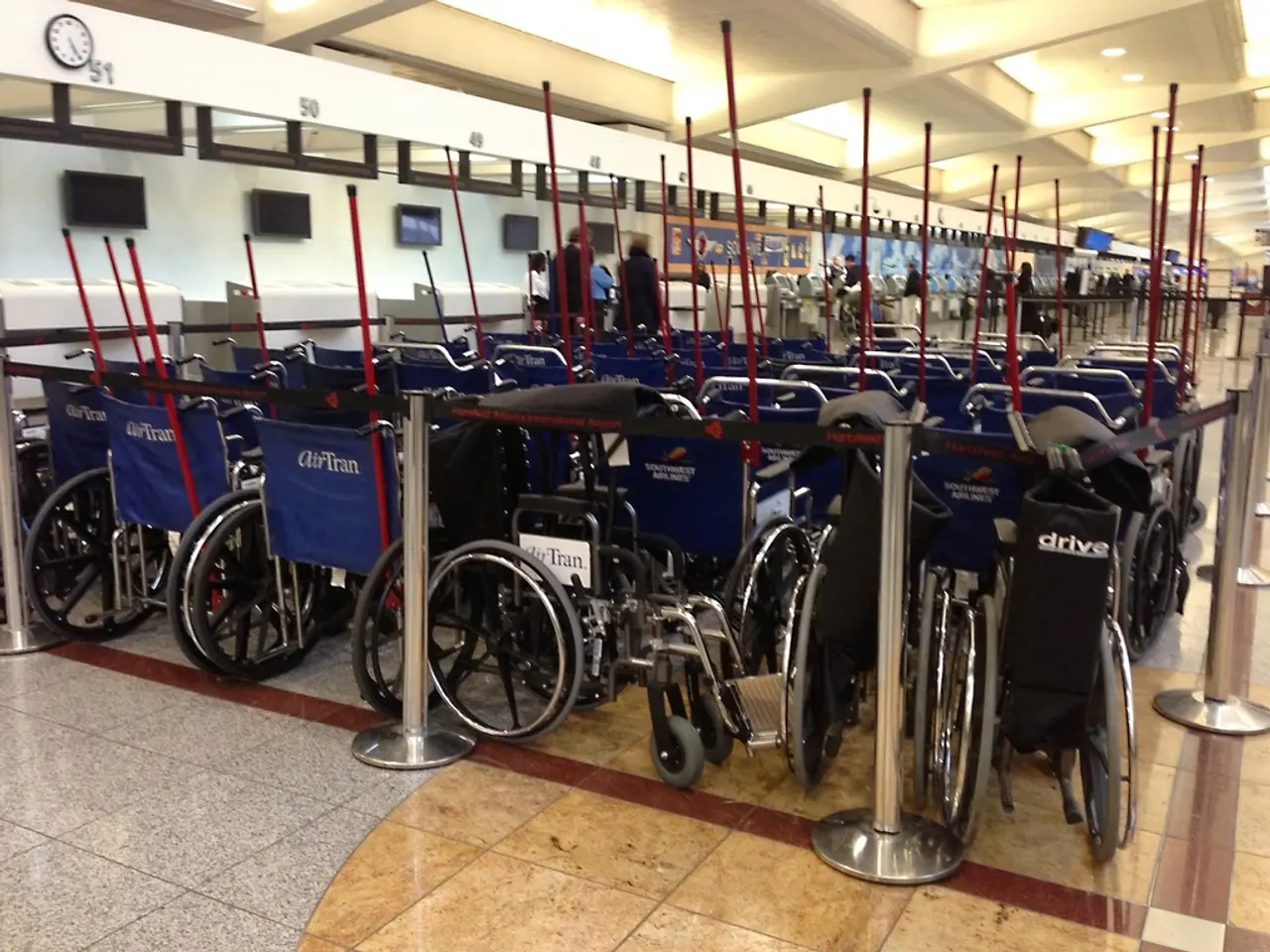High-Traffic Surroundings Navigation Assisted by Self-Driving Wheelchair at This Historically Black College or University
=======================================================================
Morgan State University, a Carnegie-classified high research (R2) institution, has developed an innovative autonomous wheelchair technology. The groundbreaking system, designed to navigate congested areas such as airports, hospitals, museums, college campuses, and military bases, was demonstrated at Baltimore/Washington International Thurgood Marshall Airport (BWI Airport).
The autonomous wheelchair technology operates by integrating advanced perception, navigation, and steering systems into a conventional powered wheelchair. Dr. Mansoureh Jeihani, director of Morgan State University's National Transportation Center and SMARTER Center, led the development of the Autonomous Mobility System. Design contributions were made by Dr. Kofi Nyarko, director of the Center for Equitable AI and Machine Learning Systems.
The system uses cameras and LIDAR sensors to perceive its surroundings and combines these with computer vision and machine learning models to navigate safely at walking speeds of 2.5 to 4 miles per hour. Users summon the wheelchair via a smartphone application by scanning a QR code at designated locations. After logging into the app and authenticating, the wheelchair autonomously travels to the user's location.
During the demonstration, students guided the wheelchair via mobile commands. However, the ultimate goal is for the wheelchair to navigate independently, providing users with greater mobility and independence. Dr. Jeihani expressed that giving people with disabilities this kind of mobility and independence makes public spaces much more inclusive.
The system runs on a general-purpose single-board computer that processes input from the sensors to dynamically steer and safely move the wheelchair. It has been tested in busy venues such as BWI Airport, demonstrating its ability to operate reliably in real-world settings.
To access the autonomous wheelchair, passengers must register or log into the app. Once authenticated, the wheelchair will arrive at the passenger's location and can be operated. The technology aims to combine the most cutting-edge AI and computer vision technologies with sensible wheelchair design choices, making it intuitive, safe, and easy to use for all users.
[1] Jeihani, M., Nyarko, K., & Morgan State University. (2022). Autonomous Wheelchair Technology at Morgan State University. [Press Release].
[2] Morgan State University. (2022). Autonomous Wheelchair Technology Demonstrated at BWI Airport. [Press Release].
[3] Jeihani, M., & Nyarko, K. (2022). Autonomous Mobility System for Wheelchairs: A Case Study. In Proceedings of the 2022 IEEE Intelligent Transportation Systems Conference (ITSC).
[4] Nyarko, K., & Jeihani, M. (2022). Designing for Equity in Autonomous Wheelchair Technology. In Proceedings of the 2022 IEEE Conference on Computational Intelligence and Engineering (CIE).
[5] Jeihani, M., Nyarko, K., & Morgan State University. (2022). Autonomous Wheelchair Technology: A Step Towards Inclusive Mobility. [White Paper].
- The autonomous wheelchair technology developed at Morgan State University not only promises to enhance the mobility and independence of users but also aims to make public spaces more inclusive, contributing significantly to the community's education-and-self-development and security.
- With the integration of advanced technology in navigation, steering, and computer vision, and the adoption of user-friendly designs, this autonomous wheelchair technology could potentially revolutionize the sports industry, opening up a world of opportunities for athletes with disabilities to participate and compete at various levels.




